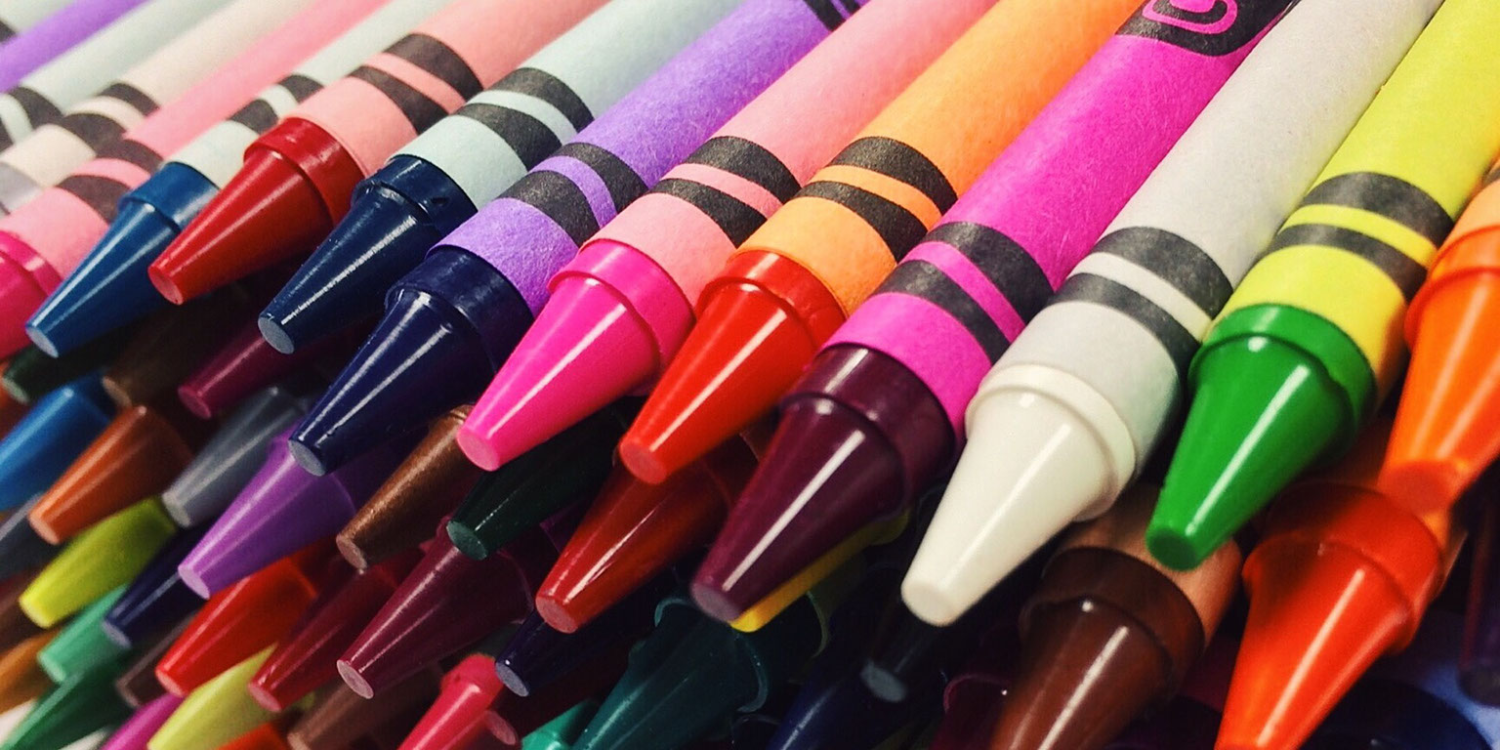By Lynn Newell

Lynn Newell is a literacy coach and interventionist at Rumford Elementary School. She has worked in the field of education for over twenty-three years, working in pre-kindergarten through secondary education. As a white teacher in one of the whitest states in the country, Lynn feels strongly that having conversations about equity and race with educators and students is a first step in creating an inclusive society.
I recently read that crayons symbolize having a carefree attitude, free from responsibility or obligations. To me, crayons symbolize power. Crayons have the power to transport me back to a time when a blank piece of paper and a box of Crayola Crayons felt exciting; or back to a time when my brother and I begged for a brand new box of 64 crayons with the built-in sharpener in the back. With all of those shades and colors, the choices seemed limitless. Crayons have the power to take me back to the chubby little toddler hands of my children, grasping their first crayons, or seeing their scribbles on walls or the kitchen table. At school, crayons are bought in bulk and occupy every classroom. Crayons have the power to cause parents to rush to Walmart or Target every fall to fill their childrens’ school supply lists.
Several months ago, a first grader named Aveaha and I were getting to know one another before beginning our reading lesson. Aveaha asked if she could draw a picture of her family, so I grabbed a box of crayons as she opened her writing notebook to a clean, white page. She picked up a pen and carefully drew herself and her mom, dad, uncle, aunt, and one cousin. Then Aveaha opened the crayon box. The same box that I originally felt offered endless possibilities was suddenly inadequate and severely limiting. This was because, as this little girl began coloring in her dress and hair color, she said, “I have to leave my skin white because there isn’t a color to match. I always have to leave it white.”
Crayons are powerful indeed, but even more powerful was Aveaha’s insight. This little girl watched as I brought out another box of crayons that I borrowed from a colleague. This time, it was a box of Colors of the World Crayons. Her jaw dropped and she said, “Wow! They look like skin!” As we chatted about skin tone and melanin, she helped me find a crayon that she thought most matched my skin tone. Not exactly white; more “peachy,” in her eyes. I helped her find one to match her skin tone. “Light chocolate. Not dark chocolate, but more like milk chocolate,” she explained as she compared the crayons to the top of her hand. She happily exclaimed, “Now I don’t have to leave my skin white! Every class should have these!” Now, my jaw was the one that dropped. I agreed and practically ran to my principal Jill Bartash’s office to share this story and my student’s idea. A few weeks later, after a quick Amazon order, I watched my student happily and proudly walking to each classroom in the school, delivering boxes of Colors of the World Crayons, tied with brightly colored ribbons. Room after room, I watched Aveaha’s confidence grow as she embraced her power. By the end of our deliveries, she was explaining to entire classrooms of students what the crayons were and why she felt everyone needed them. As we returned to her own classroom, she turned to me and said, “Today is the best day of my life. It was cool that you and Mrs. Bartash helped me with my idea.”
Because Aveaha felt comfortable to voice her personal experience and ideas, and because she had a teacher and principal that listened and honored her personal experience and ideas, she felt powerful. So, I would argue that in this case, crayons do indeed help develop responsibility and an obligation for inclusion and equity. Crayons are powerful.
